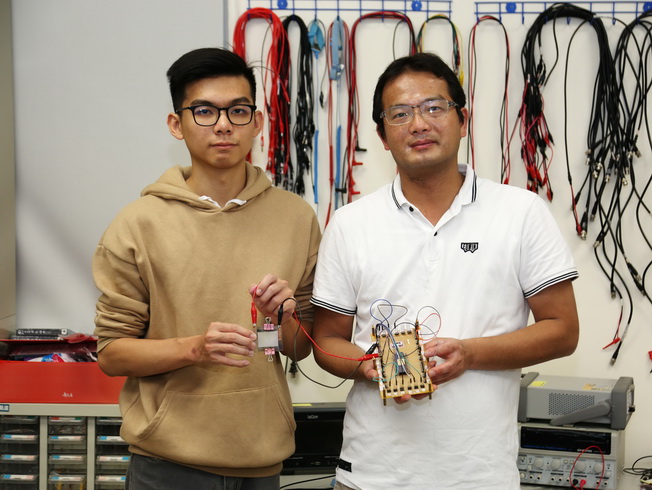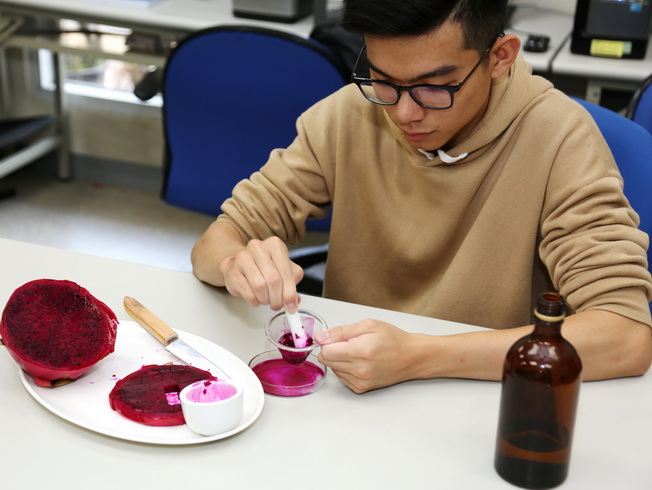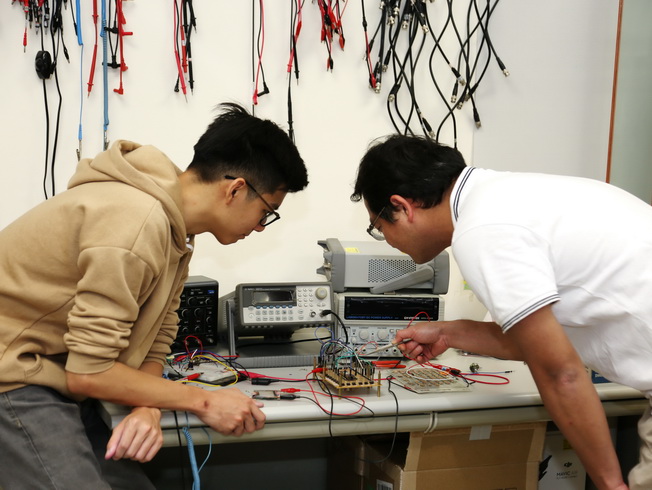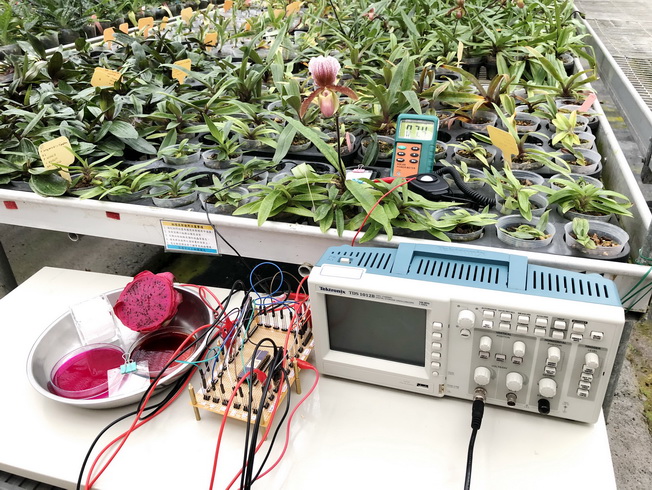| |
 |
News |
 |
Browsing: 2586 times

|
Date:2019-03-06
Bracket:2019 NCYU NEWS
Department:ncyu
|
 NCYU Student Research on Dye-sensitized Solar Cells Made from Dragon Fruits Published in an International Journal
NCYU Student Research on Dye-sensitized Solar Cells Made from Dragon Fruits Published in an International Journal
Developing a green energy industry and alternative energy sources has been one of the major national policies nowadays. In recent years, the energy has become a widely disputed issue. There is an ongoing trend of anti-nuclear sentiment in the country after the Fukushima nuclear disaster, and the idea of using nuclear power, despite being relatively clean, has been daunting ever since. Thermal power generation has also become a target of public criticism in that PM2.5 proves harmful to the human body. While solar panels provide a green energy source, the environmental pollution from heavy metals during the production cannot rooted out. Chiang Cheng-Ta, Professor of the Department of Electrical Engineering, National Chiayi University, advised the college student Jian Liang-Yu on a recent research on replacing synthetic dyes with dragon fruits in making dye-sensitized solar cells. The research paper was published in an international journal, serving as a turning point for the production of traditional solar panels, which has been causing environmental pollution.
The solar energy is the most anticipated alternative energy source for being literally inexhaustible. The traditional silicon or thin-film solar cells, however, must be produced in high-standard clean rooms, where a high-level process technology is demanded. Due to the cumbersome production process, it is restricted to specific process environments and high-priced production facilities. In contrast, the production of dye-sensitized solar cells requires a low-cost process technology, such as a slit-type extrusion coating process. Since a low technical level is required in the process, the dye-sensitized solar cells can be directly produced and assembled in a non-vacuum environment and under room temperature in general.
The production of dye-sensitized solar cells, despite being relatively easy, relies mostly on synthetic dyes, and rarely on fruits and vegetables as sources of dye. The synthetic dyes, while achieving the highest efficiency, lead to new pollution problems. To reduce pollution, there is a trend to adopt natural dyes extracted from, for example, blueberries, raspberries, black plums, pomegranates, cranberries, and now dragon fruits. These fruits contain dark anthocyanin, and thus can be used as a replacement material. Dragon fruits were utilized as a major source of dye in the recent studies at NCYU. Nevertheless, there are shortcoming in dye-sensitized solar cells, such as lower conversion efficiency than that of silicon solar cells, short excited-state lifetime of the dye, and relatively low photoelectric conversion efficiency.
Jian just passed the admission via recommendation and screening with top scores to the Graduate School of Electrical Engineering, National Chung Hsing University. He indicated that an energy crisis has been facing Taiwan’s power system, and there is an issue of whether nuclear power plants should be constructed. Compared with other power generation systems, the production of dye-sensitized solar cells results in relatively low pollution and is more cost-efficient. Thus they came up with the idea to produce dye-sensitized solar cells with dragon fruits. They incorporated the solar cells into self-developed conversion chips in making a set of highly sensitive dragon-fruit solar cell converters, which, while functioning as solar cells, may be applied to detect sunlight intensity.
According to Prof. Chiang from the Department of Electrical Engineering, he and the student have been studying organic solar cells for the past two years. The goal is to protect the Earth, reduce environmental pollution caused by production and disposal of traditional solar panels. In their experiment on making solar cells from dragon fruits, they found that the dye extracted from dragon fruit, in comparison to the dyes made from other fruits, could achieve the most significant electrode voltage after being applied to FTO glass. They also connected the glass electrode to self-developed conversion chips, which currently boast the highest sensitivity in the world. The dragon-fruit dye-sensitized solar cells could achieve high sensitivity through conversion on the chip. Therefore, they can be applied to detecting sunlight intensity, such as perceiving the sunlight intensity of orchids in the greenhouse.
Prof. Chiang maintained that the new solar cells that are less heavy and more ecofriendly will become mainstream, since researchers need to find solutions to the chemical pollution caused by producing traditional solar panels and environmental damage resulting from the disposal. While the solar energy conversion efficiency of dragon-fruit dye-sensitized solar cells needs to be enhanced compared with that of traditional solar cells, a design that boasts a higher solar energy conversion efficiency and better environmental protection deserves further exploration and development in the days to come.
|



|
 |

|
 |
|
 |
 |
|


 ][
][